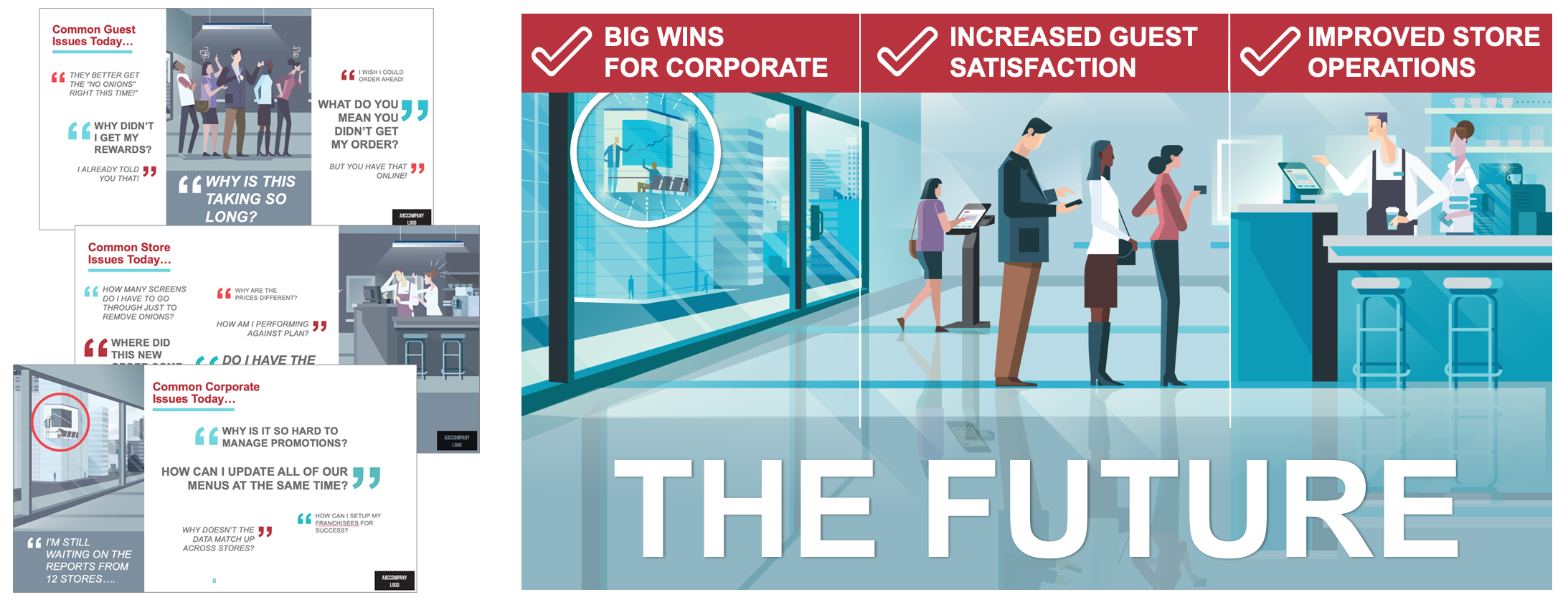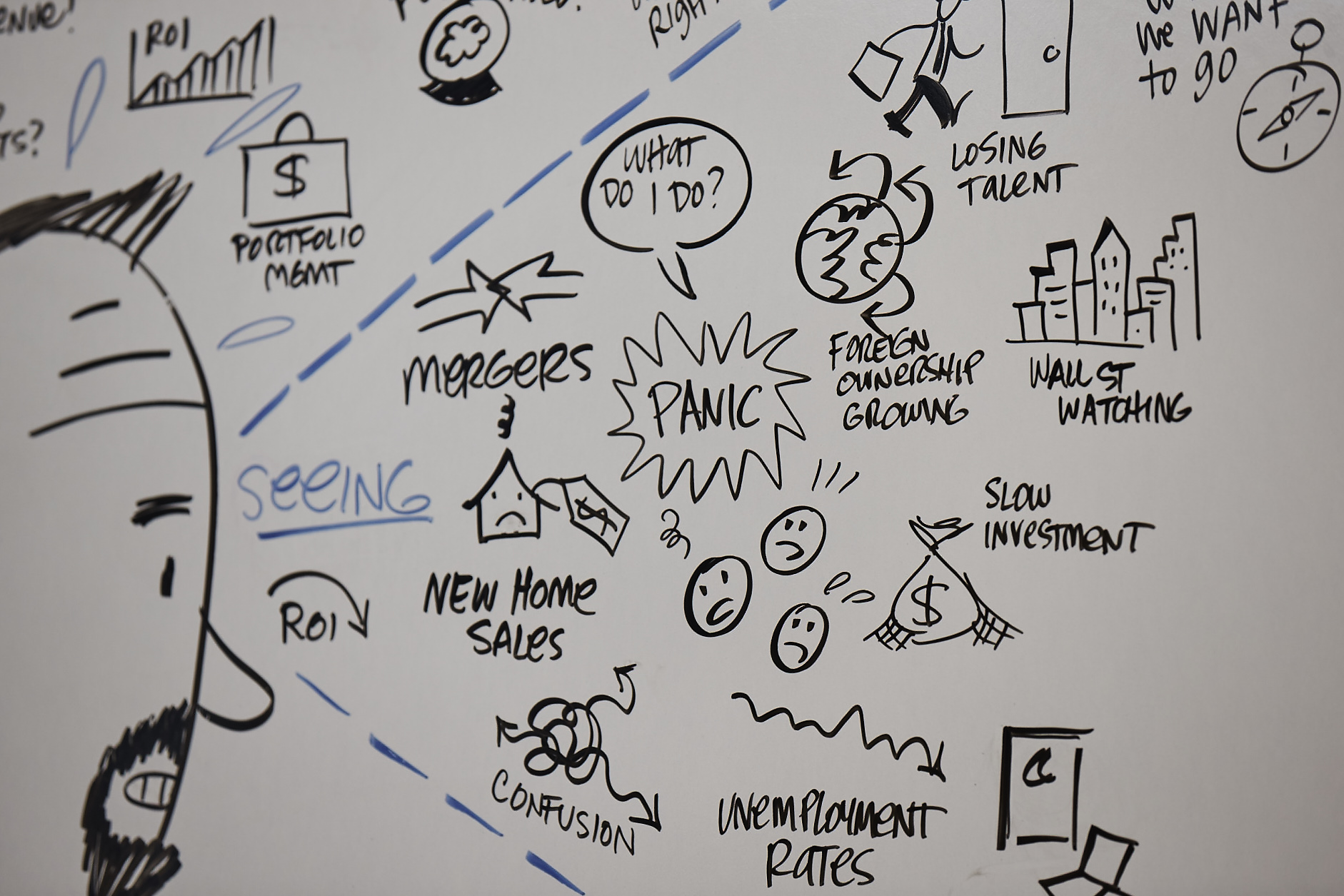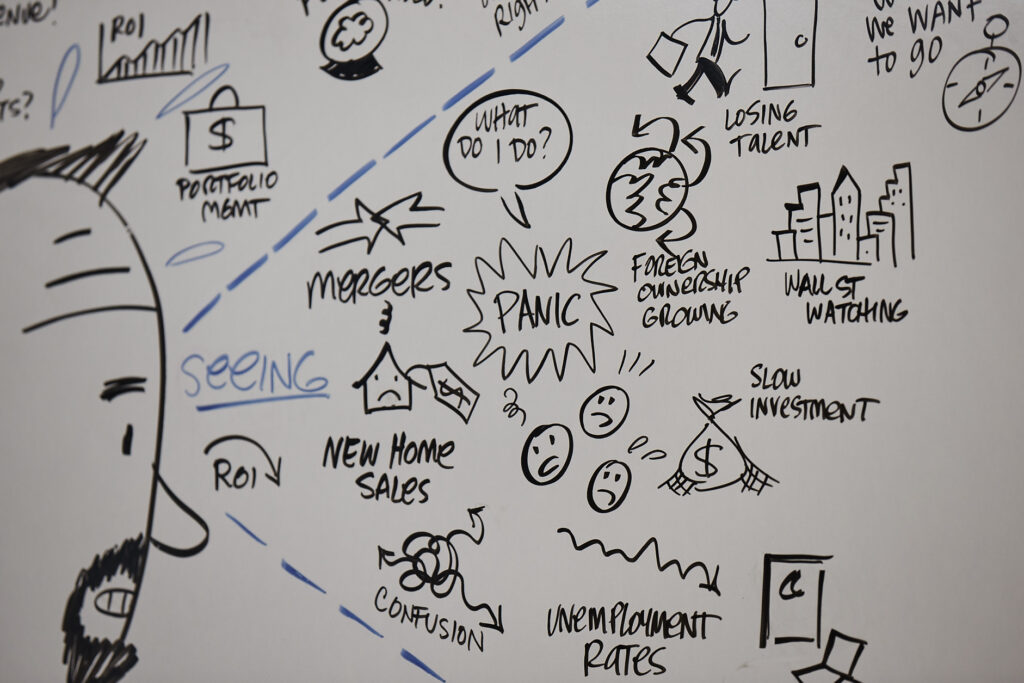Visual storytelling empowers sales teams—with empathy
Start with “why?”
Are you one of the 43 million people that has watched Simon Sinek’s TED talk on the golden circle? If so, then you’ve heard this line before: “People don’t buy what you do, they buy why you do it”.
His concept is simple: it is critical to articulate your vision—your “why”—to an audience if you want to inspire action. While explaining “what” something is and “how” it works is important, ultimately our brains are hardwired to make decisions based on feeling and belief. And to inspire an audience to take action—to buy your product or service, for example—you cannot start with the “what” or the “how”, you must start with the “why”.
When you can inspire your audience to believe in what you believe in, you’ve unlocked real potential.
The “why” perspective is classic advice for entrepreneurs, marketers, and sales leaders. But what often strikes me when I stop and think about it is that even when you start with your “why”, you’re still starting a conversation about you. About what you (or your company) believes. So how do you know that your beliefs will resonate with your audience? And resonate enough to inspire action?

These slides are from a sales deck for a restaurant technology solution, and have been anonymized. Before and after visual storytelling scenarios are powerful ways to bring both “why?” and empathy into sales conversations.
Lead with empathy
As a trained designer and designer-thinker, it’s been ingrained in me to always lead with empathy. Empathy, put simply, is the ability to know and appreciate what another person is thinking and feeling. It’s an emotional intelligence skill that allows you to understand and relate to your audience’s unique situation and perspective. Having empathy is critically important in sales conversations, because who wants to buy from someone that can’t understand your needs?
Before you can start with your “why”, you must first ensure that your solution (product, service, process, idea, etc) is framed from your audience’s/customer’s perspective—assuming, of course, that your solution actually meets a real customer need. You’ve got to help your customer to clearly see themselves in your narrative, and to see how they fit into your future vision—because your future vision involves success for both yourself and them.
So how can you better understand customers? Empathy maps are a great way to collaboratively visualize a person, or type of person. They help to capture knowledge about them so, in this case, sales teams can have a shared understanding of prospects, promoting better decision-making and encouraging empathy.

Empathy maps help you better understand your customers—or any audience.
Focus on value
As familiar as things like “why” and value are to those of us in sales roles, I often find myself sitting in rooms where the discussion is driven solely by a huge deck of PowerPoint slides chock full of dense technical detail and industry jargon. It’s the classic features vs. benefits problem. Features are easy to articulate—they’re somewhat universal and known. Benefits less so—they can be more personal or audience-specific. There are many powerful storytelling techniques, but “Death by PowerPoint” is not considered one of them.
While the high-level brand story for an organization might be clear and compelling, the customer-level narrative around a specific product or service offering is often overly complex. Once the technical experts are in the room, they want to show their deep knowledge and experience, and jump right into describing a detailed service that they are very proud to have produced. While that is important in some contexts, the value of showing the customer upfront that you know what they need—and validating that you have it right—is often overlooked. This creates an early opportunity for an interactive discussion and allows you to target the conversation to their unique needs at that moment (hopefully avoiding the situation where they say, at the end of a long presentation, “that sounds great, but what I actually need right now is something that does X, and it looks like you are focused on Y”). This is the role that the art of storytelling plays—it helps people to better relate to one another.
At Tremendousness, we believe in the power of visual storytelling and its ability to cut through the noise and inspire action (just what is visual storytelling…? find out more here). This is not simply because visuals help people learn and help teams sell, but also because we believe that leading sales groups through an iterative, facilitated design process—one that starts with empathy for their customers—enables them to collaboratively articulate a narrative that expresses their unique vision while simultaneously responding to their customers’ specific pain points and needs.
The key here is that the sales team is jointly aligning around, and articulating, what will be different and better for their customers in the future. By building this narrative together, and actually drawing out key parts of the story, it allows sales leaders to align and own a consistent message. This result is a visual overview that shows the future, combined with a narrative that customers can relate to. Storytelling marketing helps sales teams speak consistently, and helps customers see themselves benefitting from not just your solution, but your vision as well. Why? Because the customer is part of that story.

This customer journey map is part of a series created for a Fortune 500 technology firm, and has been anonymized. It too features current state and future state visualizations, along with the process to make the big change happen.
Visualize the future
Once you are able to establish empathy with your customer, the next step is help them visualize the future. What does it look like for your customer when their needs are met? How does your solution/service play a role in that transformation? By showing how their world will change, for the better, it will make the value of your product specific to their situation. Here are a few of the ways we empower sales teams to envision the future from their customer’s perspective.
If you’re the DIY type, there are a variety of Gamestorming exercises to get into a customer’s mindset, including the aforementioned empathy maps. You can then try to visualize their future in order to better align around and understand the customer’s world.
But the truth is that facilitated discovery or ideation sessions featuring live sketching is an efficient and engaging way to collaboratively flesh out ideas and solutions. Usually just the act of dedicating a block of time with limited distractions—usually a half or full day—will allow your team to generate ideas and uncover insights that were otherwise inaccessible. Many of our projects begin this way, although the visualization can even happen via virtual meetings when needed. It’s an invigorating process that results in actionable content, and people leave the room nodding in agreement.
That content can then become an infographic or video or storyboard or presentation or some form of data storytelling that solidifies the narrative into a digital storytelling artifact (or several) that the whole team can use. Check out our visual storytelling blog or our case studies to learn more—or just contact us today—we’d love to help empower your sales team with visual storytelling.
